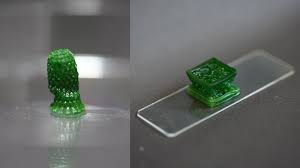
Breaking News
 Creating the First Synthetic Human D.N.A From Scratch
Creating the First Synthetic Human D.N.A From Scratch
 Texas Ready for $10M Bitcoin Purchase After Governor Signs Bill for State Reserve
Texas Ready for $10M Bitcoin Purchase After Governor Signs Bill for State Reserve
 How do you feel about this use of AI
How do you feel about this use of AI
 Big Tech Executives Welcomed as Army Colonels, New Government AI Project Leaked
Big Tech Executives Welcomed as Army Colonels, New Government AI Project Leaked
Top Tech News
 xAI Grok 3.5 Renamed Grok 4 and Has Specialized Coding Model
xAI Grok 3.5 Renamed Grok 4 and Has Specialized Coding Model
 AI goes full HAL: Blackmail, espionage, and murder to avoid shutdown
AI goes full HAL: Blackmail, espionage, and murder to avoid shutdown
 BREAKING UPDATE Neuralink and Optimus
BREAKING UPDATE Neuralink and Optimus
 1900 Scientists Say 'Climate Change Not Caused By CO2' – The Real Environment Movement...
1900 Scientists Say 'Climate Change Not Caused By CO2' – The Real Environment Movement...
 New molecule could create stamp-sized drives with 100x more storage
New molecule could create stamp-sized drives with 100x more storage
 DARPA fast tracks flight tests for new military drones
DARPA fast tracks flight tests for new military drones
 ChatGPT May Be Eroding Critical Thinking Skills, According to a New MIT Study
ChatGPT May Be Eroding Critical Thinking Skills, According to a New MIT Study
 How China Won the Thorium Nuclear Energy Race
How China Won the Thorium Nuclear Energy Race
 Sunlight-Powered Catalyst Supercharges Green Hydrogen Production by 800%
Sunlight-Powered Catalyst Supercharges Green Hydrogen Production by 800%
MIT Invents "Bubble Wrap" That Pulls Fresh Water From The Air...Even In The Driest Places.

MIT researchers have invented a new water-harvesting device — a high-tech version of "bubble wrap" — that can pull safe drinking water straight from the air, even in extreme environments like Death Valley, the driest desert in North America, according to LiveScience.
In a study published June 11 in Nature Water, the team described how their innovation could help address global water scarcity. "It works wherever you may find water vapor in the air," the researchers wrote.
The device is built from hydrogel, a material that can absorb large amounts of water, sandwiched between two glass layers resembling a window. At night, the hydrogel draws moisture from the air. During the day, a special coating on the glass keeps it cool, allowing water to condense and drip into a collection system.
The hydrogel is molded into dome shapes — likened to "a sheet of bubble wrap" — that swell when absorbing moisture. These domes increase surface area, helping the material absorb more water.
LiveScience writes that the system was tested for a week in Death Valley, a region spanning California and Nevada that holds the record as the hottest and driest place in North America.
Despite the harsh conditions, the harvester consistently produced between 57 and 161.5 milliliters of water daily — about a quarter to two-thirds of a cup. In more humid regions, researchers expect even greater yields. According to MIT representatives, this approach outperforms earlier water-from-air technologies and does so without needing electricity.
One major breakthrough was solving a known problem with hydrogel-based water harvesters: lithium salts used to improve absorption often leak into the water, making it unsafe. The new design adds glycerol, which stabilizes the salt and keeps leakage to under 0.06 parts per million — a level the U.S. Geological Survey deems safe for groundwater.
Though a single panel can't supply an entire household, its small footprint means several can be installed together. The team estimates that eight 3-by-6-foot (1-by-2-meter) panels could provide enough drinking water for a household in areas lacking reliable sources. Compared to the cost of bottled water in the U.S., the system could pay for itself in under a month and remain functional for at least a year.

 He 3D Printed a Whole House
He 3D Printed a Whole House

